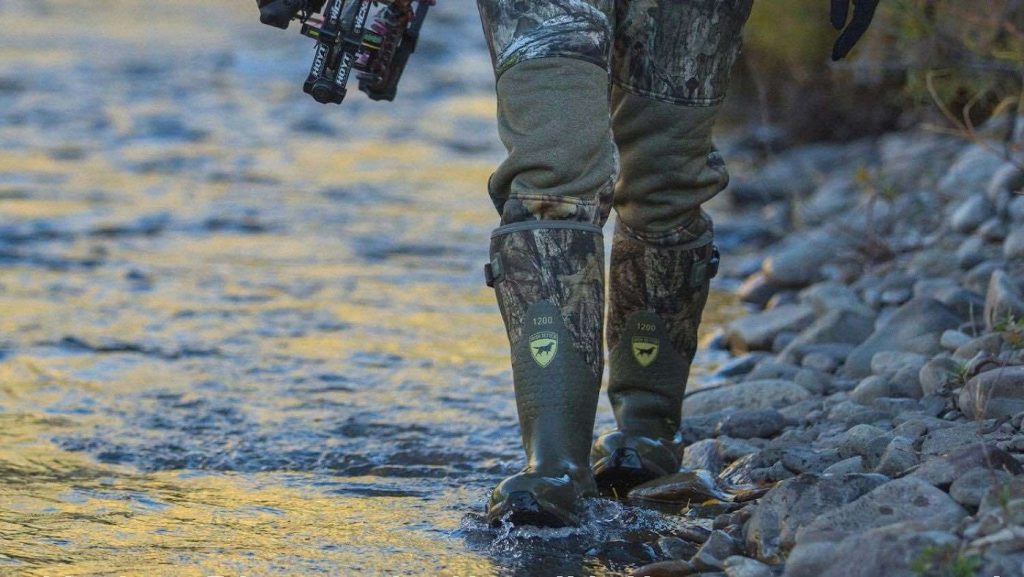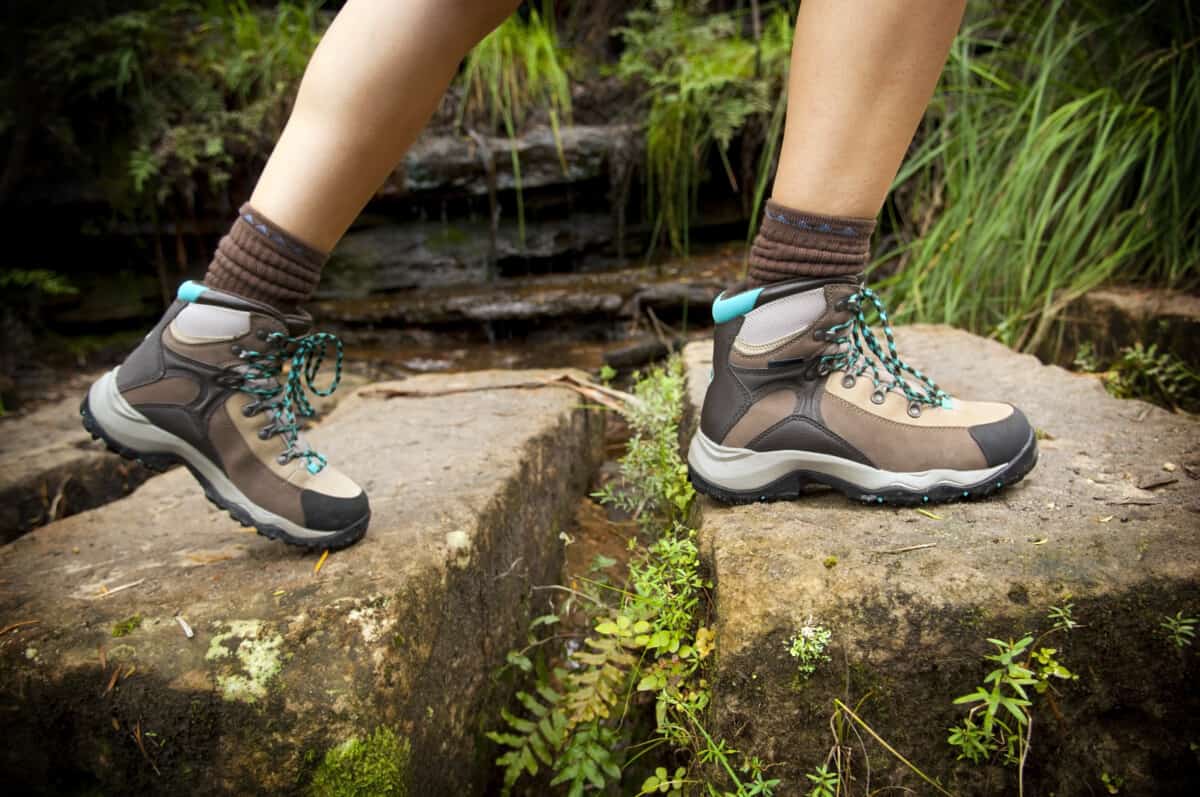When choosing the right footwear for outdoor activities, it’s essential to consider the specific needs of the activity you’re planning to engage in. This is particularly true when comparing rubber boots for deer hunting vs hiking boots.
Both types of boots offer unique features designed to enhance your experience in the wild, but they serve very different purposes. Rubber boots for deer hunting are crafted to provide stealth, scent control, and waterproof protection in wet and muddy environments.
On the other hand, hiking boots are designed for durability, support, and comfort over long distances on varied terrains. Understanding the differences between these two types of boots can help you make an informed decision on which is best suited for your next outdoor adventure.
Rubber Boots for Deer Hunting
Rubber boots have become a staple for deer hunters, primarily due to their exceptional waterproofing capabilities and scent control. These boots are designed to keep your feet dry in wet conditions, a common scenario during hunting seasons.

Moreover, rubber boots minimize human scent, a critical factor in deer hunting, as deer are highly sensitive to odors. This feature can significantly increase your stealth and success rate in the field.
Hiking Boots
On the other hand, hiking boots are engineered for durability, comfort, and protection on varied terrains. They offer superior ankle support, essential for navigating rugged landscapes, and are made from materials that withstand the wear and tear of long treks.
Hiking boots are also designed with comfort in mind, providing cushioning that allows for extended periods of walking without discomfort.
Key Factors for Comparison
1. Waterproofing and Weather Resistance
Both rubber and hiking boots offer waterproof options, but rubber boots inherently excel in keeping your feet dry in wet conditions. Hiking boots, however, often feature breathable waterproof membranes like GORE-TEX, which provide a balance between water resistance and breathability.
2. Durability and Protection
Hiking boots are typically more durable and provide better protection against rough terrain thanks to their robust construction and materials. Rubber boots can offer good protection from water and muck but might not withstand abrasive conditions as well.
3. Comfort and Fit
Hiking boots are designed for long-duration wear, offering superior comfort and fit adjustments, such as lacing systems that ensure a snug fit. Rubber boots can be less flexible and offer limited cushioning, which might affect comfort over time.
4. Traction and Stability
Both boot types offer excellent traction, but hiking boots are specifically designed to handle a wide range of terrains, including rocky and uneven surfaces, with soles engineered for grip and stability. Rubber boots provide good traction on wet and slippery surfaces but may not offer the same level of stability on uneven ground.
5. Breathability and Temperature Regulation
Hiking boots win in terms of breathability, with materials that allow for air circulation, preventing overheating and sweat buildup. Rubber boots, being less breathable, can lead to warmer and more humid conditions inside the boot, especially in warm weather.
6. Weight and Mobility

Rubber boots tend to be lighter, offering ease of movement, which is advantageous in wet terrains and for activities requiring agility. Hiking boots, while potentially heavier, provide unmatched support and mobility on diverse terrains, compensating for the added weight with enhanced protection and comfort.
Situational Suitability for Boots
For Deer Hunting
Rubber boots are often preferred for deer hunting due to their scent control and waterproofing. Hunters benefit from features like scent-free rubber, insulation for cold weather, and ease of cleaning, which help in staying undetected and comfortable in the field.
For Hiking
Hiking boots are favored for their comfort, durability, and adaptability to various terrains. They cater to the needs of hikers by providing ankle support, cushioning, and protection against rocks and roots, ensuring a safer and more enjoyable hiking experience.
When choosing between rubber boots and hiking boots, consider the nature of your outdoor activities, the conditions you’ll face, and your priorities in terms of comfort, protection, and performance.
Whether you’re stalking deer in the backcountry or trekking through mountain trails, the right footwear can make all the difference in your adventure’s success and enjoyment.
FAQs
- What makes rubber boots suitable for deer hunting?
Rubber boots excel in deer hunting due to their waterproofing capabilities and scent control features, keeping hunters dry and minimizing human odor to enhance stealth.
- Why are hiking boots preferred for long-distance treks?
Hiking boots offer durability, support, and comfort over varied terrains, providing superior ankle support and cushioning for extended periods of walking.
- How do waterproof features differ between rubber boots and hiking boots?
While both offer waterproof options, rubber boots are inherently better at keeping feet dry in wet conditions, whereas hiking boots often incorporate breathable waterproof membranes for a balance of water resistance and breathability.
- Which boots offer better protection against rough terrain?
Hiking boots typically provide better protection due to their robust construction and materials, offering durability against abrasive conditions compared to rubber boots.
- What factors contribute to the comfort of hiking boots versus rubber boots?
Hiking boots prioritize comfort with features like adjustable lacing systems and cushioning for prolonged wear, while rubber boots may offer limited cushioning and flexibility.
- In what scenarios are rubber boots more advantageous than hiking boots?
Rubber boots are favored in wet terrains and for activities requiring agility due to their lighter weight and waterproofing, making them ideal for deer hunting and similar outdoor pursuits.
Conclusion
Considering the distinct purposes and features of rubber boots for deer hunting and hiking boots, it’s evident that each serves its own niche in outdoor activities.
Whether you’re navigating muddy swamps in search of game or trekking through rocky trails in the mountains, selecting the appropriate footwear is crucial.
By understanding the differences outlined in this comparison, you can make an informed decision based on your specific needs, ensuring a more enjoyable and successful outdoor adventure.

